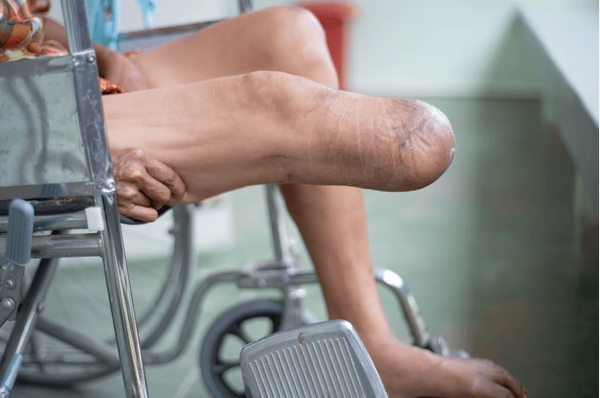After an amputation, adapting to life and maintaining overall health becomes a crucial part of recovery. Self-care involves managing both physical and emotional challenges. Below is a comprehensive guide to assist individuals during this period.
1. Wound Care
Post-surgery wound care is essential to prevent infections and promote healing. Keeping the wound clean and dry, regularly changing bandages, and following your doctor’s instructions on cleaning techniques help ensure proper recovery.
2. Pain Management
Phantom limb pain is common after an amputation. Medications, along with therapies like massage, heat application, and relaxation techniques, can help alleviate this discomfort. Consulting a pain specialist may be beneficial for those experiencing severe or chronic pain.
3. Physical Rehabilitation
Working with a physical therapist plays a key role in regaining mobility and strength. Therapy helps individuals adapt to life without the limb, improve balance, and increase stamina. Therapists may also assist in preparing for prosthetic fitting.
4. Prosthetic Preparation and Care
If a prosthetic limb is part of the recovery plan, care and proper maintenance of the prosthesis are critical. Regular follow-up visits with the prosthetist ensure a comfortable fit, and keeping the prosthesis clean prevents skin irritation.
5. Adapting to Daily Life
Daily tasks can initially be challenging, but occupational therapy helps individuals relearn how to perform activities like dressing, eating, and bathing independently. Home modifications, such as installing ramps or grab bars, also make living spaces more accessible.
6. Mental and Emotional Health
The emotional impact of an amputation can be significant. Counseling and support groups provide a space for individuals to share experiences and cope with feelings of loss, frustration, or depression. Mental health support is as vital as physical recovery in the healing process.
7. Lifestyle Adjustments
Regular exercise, healthy eating, and managing chronic conditions such as diabetes or high blood pressure contribute to overall health and well-being. Individuals should also be vigilant about maintaining their weight, as this can affect the comfort and function of a prosthesis.
8. Follow-up and Support
Routine follow-ups with healthcare providers ensure the wound is healing properly and the prosthetic limb, if used, is functioning well. Lifelong care and monitoring are necessary for optimal recovery and long-term health management.
In summary, self-care after an amputation is a multi-faceted process that includes managing physical health, emotional well-being, and adapting to new routines. With the right support and resources, individuals can regain independence and lead fulfilling lives.
